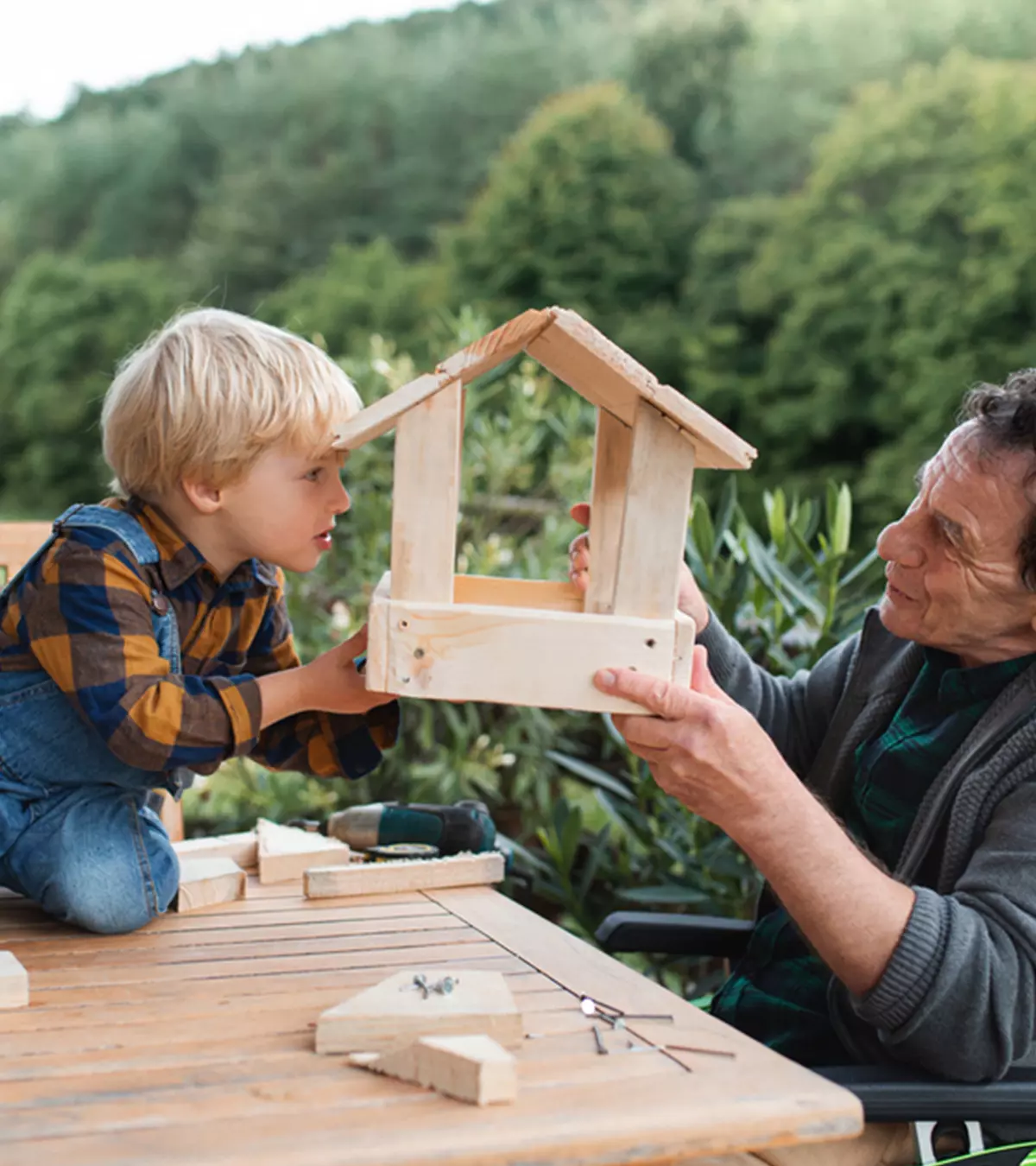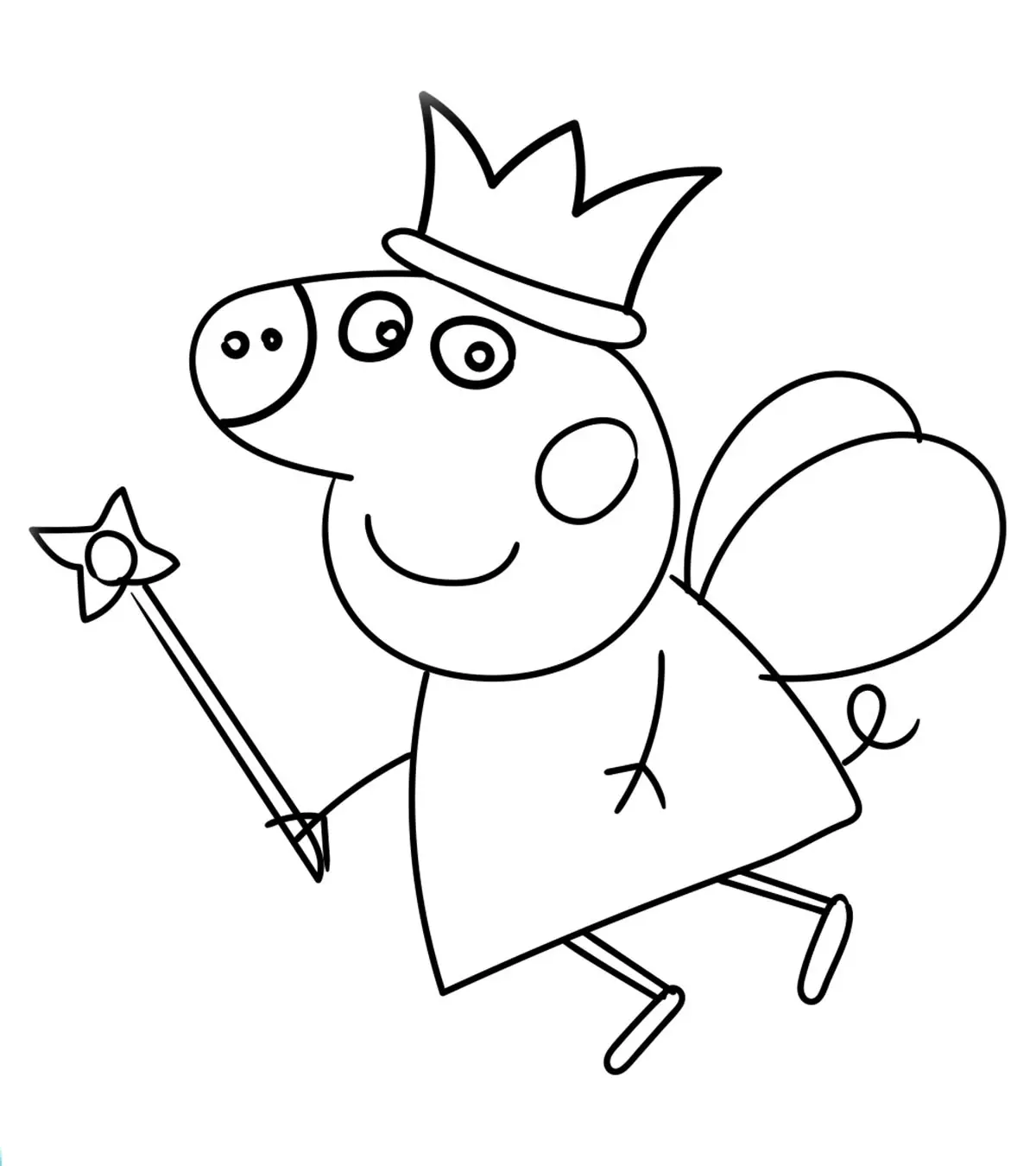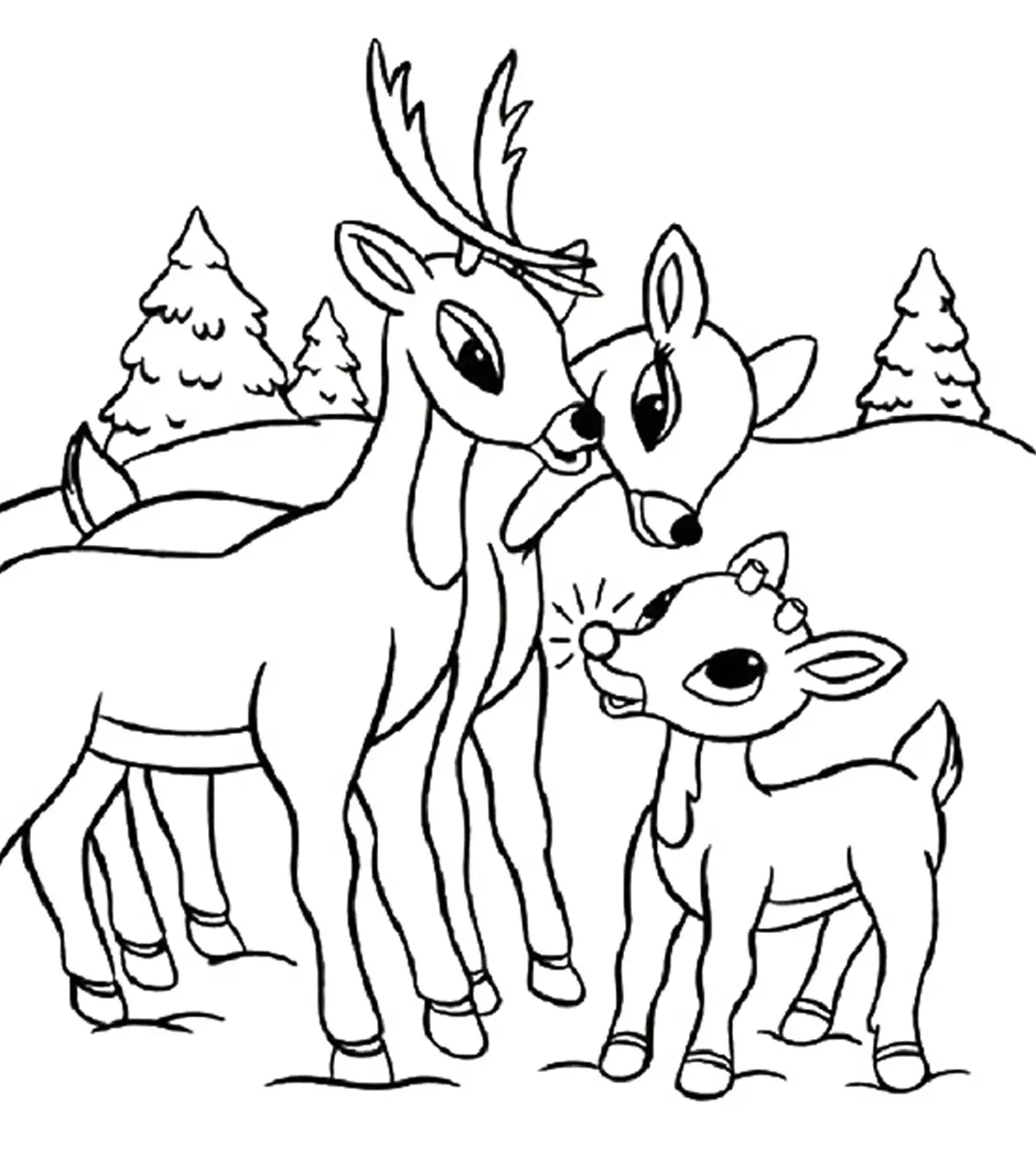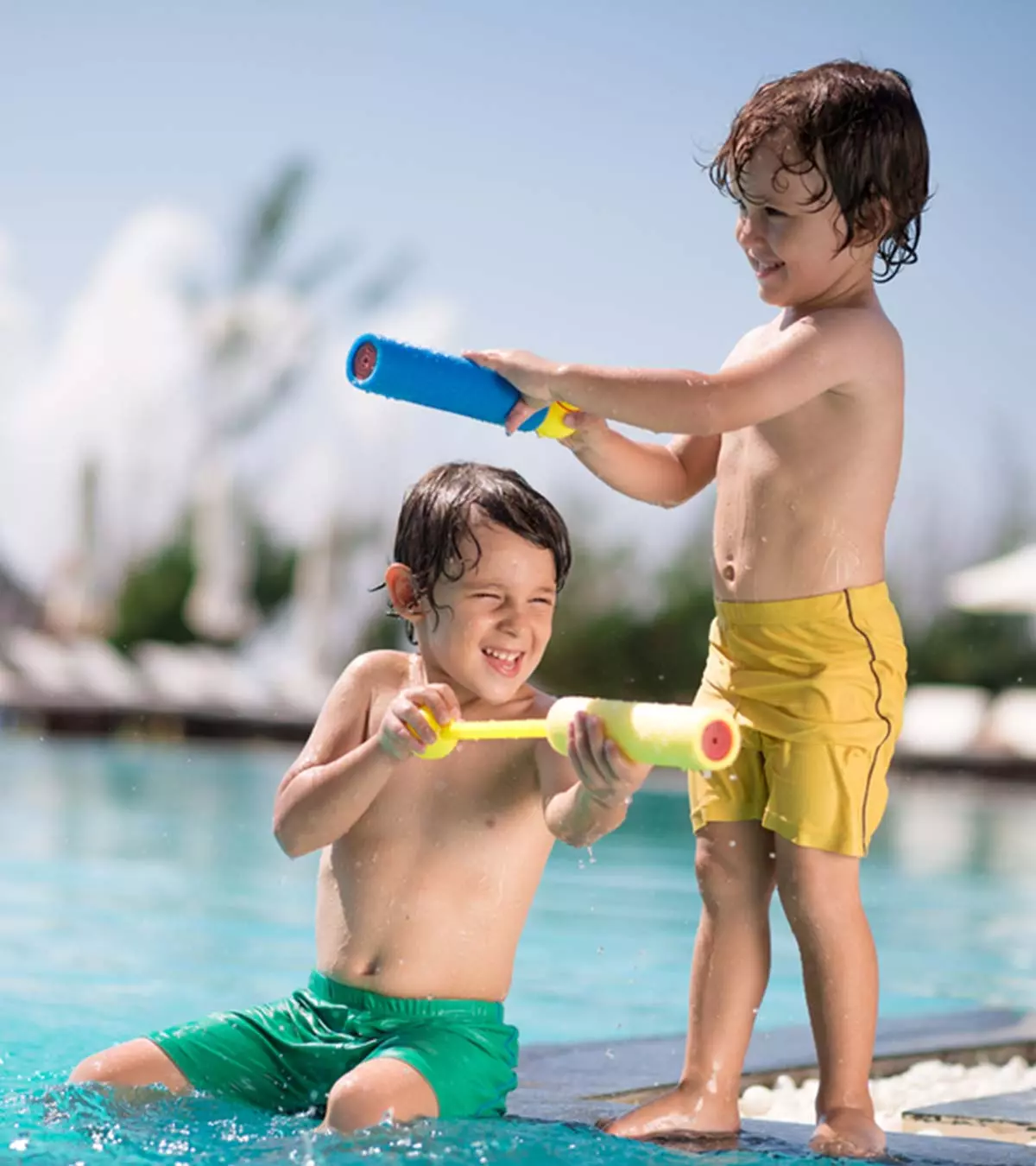
Image: ShutterStock
If you are a parent of a child who gets bored very easily, this post with some interesting games-for-7-year-olds can be your savior. You may be busy with family, work, and home responsibilities, but it is important to find some time and tag along with your little one to enjoy their activities. At the age of seven, children can dress independently, catch objects that come their way, tie shoelaces, etc. You will also notice a rapid development in their cognitive, social, and physical skills. Therefore, it is essential to engage them in activities that stimulate their mental and physical abilities. Read this post to explore fun games and activities for 7-year-olds. These activities are specifically designed to boost your child’s physical stamina and mental skills.
Key Pointers
- An interesting crossword challenge or dice math can effectively stimulate the developing brains of seven-year-olds.
- Art and craft can boost their creativity, while a simple baking session can be a lot of fun.
- Hopscotch, anthill, Chinese whispers, and a huge collection of educational activities and games can keep your children engaged and entertained.
30+ Engaging Activities And Games For Seven-Year-Olds
Seven-year-olds are full of energy and curiosity and could do with fun and engaging activities that spark their creativity and learning. Whether indoors or outdoors, games that challenge their minds and encourage social interaction can make playtime exciting and educational.
Learning And Educational Activities
Learning isn’t just about reading books—it’s also about engaging in activities that spark curiosity and creativity. Educational activities make learning fun for children and help develop new skills in an interactive and enjoyable way. According to a whitepaper published by the LEGO Foundation, learning activities in early school settings are essential for developing key 21st-century skills such as collaboration, communication, and critical thinking. These activities also contribute to children’s social, emotional, language, and math skills (1).
1. Dice math
Improving the basic math skills of your child at a young age is crucial. This quick math game for 7-year-olds will get your little genius started with mental addition and subtraction.
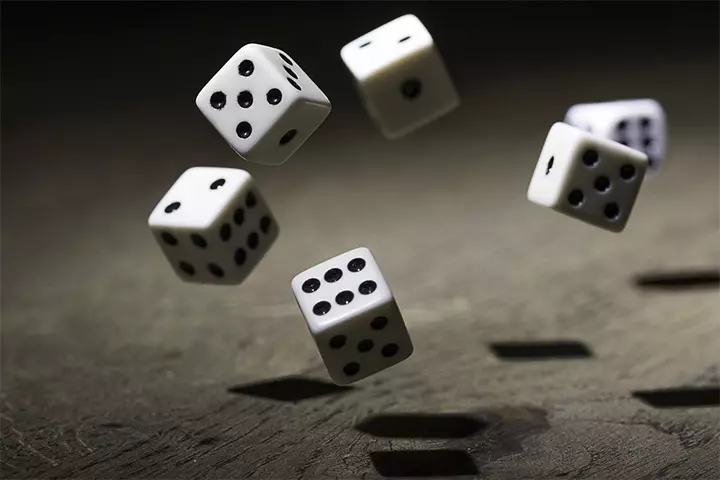
- All you need is a pair of dice, and maybe a paper and a pencil to help along the way.
- Roll the dice and ask your child to add or subtract the numbers quickly.
- If you want to make it competitive, take turns rolling the dice and doing the math, while alternating between addition and subtraction.
- Add the results to your scores, and the one to reach a total of 100 first wins.
2. Math bingo
Math bingo is a fun game for seven-year-olds to practice their numerical skills. It requires minimal props and can be played in the classroom or at home. Here is how you can conduct this simple game.
- Create bingo cards with answers to math problems like addition, subtraction, or simple multiplication.
- Call out different math problems for the children to solve.
- Ask the children to mark the answers on their cards.
- The first child to complete a line—horizontally, vertically, or diagonally—shouts “Bingo!” and wins.
3. Crossword challenge
This crossword puzzle for kids could be the answer to teaching your 7-year-old to read. Crosswords enable the child to start reading horizontally and vertically and improve your child’s memory, observation skills, and processing capabilities.
- Choose a category that your child is interested in, such as shapes, fruits, colors, animals, or superheroes.
- Let your child give the crossword a catchy title. Make sure that the hints challenge the child but are not too difficult for them.
- You can write down the hints by the side of the crossword. You can also sit beside your seven-year-old as they solve the puzzle and help them out.
You can also use online options that help you create crosswords.
4. Verb city
This engaging English activity for 7-year-olds helps learn about the regularly used verbs and how to use them appropriately in sentences. You can always tweak the activity to nouns or other parts of speech, and let your child’s vocabulary expand.
- Use the colored construction papers to cut out structures of some buildings in your neighborhood, such as a house, a school, a supermarket or a shop, and a park.
- Stick the cutouts on the large sheet of white paper or the chart with sufficient space around each for your child to write or draw.
- Allow your child to come up with verbs for activities that happen at each of the places. For example, learn, play, study, and teach are activities at a school. Jot down your child’s answers next to the appropriate cutouts.
- You can then allow your 7-year-old to draw people, roads, and trees to complete the neighborhood.
5. Mad poet
This indoor game for kids aims to let your child develop rhyming words, which will enhance their creative thinking skills while staying focused.

- Staple a few sheets of paper to form a small booklet. Have your seven-year-old give the booklet a fancy title, something like “My Crazy Rhyme Book,” and decorate the first page with it.
- Pick out five of your child’s favorite rhymes and have them write one on each page of the book. Ask them to leave out the last word on every line.
- If you would like, you can have your child write on the right page and leave the left blank so that they can draw illustrations later.
- Once the booklet is ready, have your child fill in the missing words at the end of each line with rhyming words. Do not worry about whether or not the new words fit into the poems and make sense.
The game can be fun and let you two have a good laugh together.
6. Hopscotch
Hopscotch can engage the child physically and mentally as they figure out how best to reach the target square. It’s one of the best outdoor games and activities for kids to teach your children to start recognizing sequences of numbers and count backward.
- You just have to draw out the hopscotch pattern on the ground and provide the players with a marker. You can use a pebble, a shell, or something similar.
- In the first round, each player tosses his/her marker into the first square, hops on one leg through all the squares, and picks up the marker while hopping back.
- In the second round, each player tosses their marker into the next square, and so on.
- If you want to improve your child’s mental math abilities, give them a simple problem that includes basic operations to decide which square they have to hop into.
 Did you know?
Did you know?7. Music with bottles
What better way to learn than through music? This educational activity for kids allows your child to experiment with some basics of music, such as sound and pitch. They will also develop recognition skills while they figure out the differences in the notes and the pitch.
- Arrange the six bottles on a platform and fill them with varying quantities of water.
- If you want to make it easier, fill the first bottle almost to the brim and gradually reduce water quantity for the consecutive bottles.
- You can make it more fun by adding different color dyes to each bottle of water.
- Ask your 7-year-old girl or boy to tap each bottle with the pencil or the spoon gently. Help him notice the changes in the tones and notes.
- You can further change the levels of water in the bottles and explore music also.
8. Ant hill
Give your preschooler the chance to experience nature while learning about the many ecosystemsiA system that includes all the living organisms that reside and interact in a given environment. and food chains out there. Your child will feel like an explorer amidst a new and unknown world and gain the confidence to face unknown challenges.

- Join your kids to explore the area and locate an anthill.
- You can also pack a picnic and head out to a nearby park. Help your children spread out some bits of the food (like honey, sugar, salt, powdered candy, bread crumbs, shredded fish, etc.) near the anthill.
- Let the kids observe how long it takes for the ants to find the food and how they carry it through to the anthill. Show them how the ants help each other along the way.
Art And Craft Activities
Art and craft activities enhance a child’s focus, listening skills, imagination, and communication. They also help children recognize textures, colors, and shapes while improving their creativity, motor skills, math abilities, and language skills (2).
9. Camouflage with nature
Here’s a simple craft idea for the artist in your 7-year-old.

- You could start by going out for a little walk in your garden or outdoors. Ask your child to look at the various colors out there.
- Then hand them some paper and some crayons or markers and ask them to draw and color out whatever they saw outside.
- Then, ask them to hide the colored pieces in your garden and go on an adventure with them to find those pieces again.
10. Nature collage
Nature Collage is a simple yet engaging activity that turns walks in the park into an adventure. It helps them develop a deeper appreciation for nature’s beauty and diversity. Here’s how to involve your child in this creative activity.
- Ask the child to collect leaves, flowers, and other natural items during a walk.
- Once you’re back home, provide a piece of paper and some glue. Let your child arrange and stick the collected items on it.
- Discuss the unique characteristics of each item, such as its color, shape, and texture, during the collage-making process.
- You can create new collages on each walk or frame the finished one to showcase their creation.
11. Sundial
This easy craft activity is loaded with lessons for your 7-year-old child. Teach them how to tell time using a sundial, as the sun moves through the day.
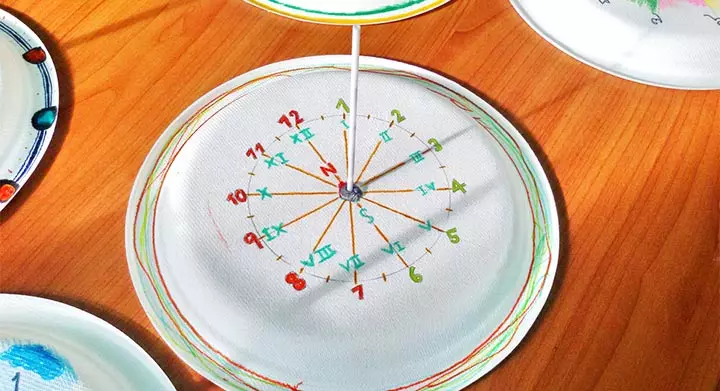
- Simply poke a straw or a pencil through the center of a large paper plate.
- When the clock strikes an hour, have your child take the device to your terrace or backyard and mark the time,
- Get them to go out every hour and mark where the shadow of the straw falls.
- Continue the markings the next day to complete the paper sundial clock.
12. Sock puppets
Sock puppets are excellent tools to teach your child the basics of communication and express themselves creatively.
- Ramble your closet for some old socks and paint some character faces on them.
- Divide the puppets between yourself and your child, and let the puppet show begin!
- You can also introduce your seven-year-old to voice modulations, tones, different speaking styles, and emotions.
13. Make your own kinetic sand slime
Sensory play enhances your child’s fine motor skillsiAbilities where one needs to use the small muscles in their hands, fingers, and wrists to perform specific movements. , setting them up to complex activities such as pottery, weaving, playing basketball, kickball, or tennis in the future. TactileiRelating to the sense of touch. games allow your kids to gain physical strength and confidence.
- Kids love playing with sand, and DIY kinetic sand slime is non-toxic, easy to make, and long-lasting.
- All you need is some play sand, glue, shaving cream, liquid starch, and food coloring.
- Mix them in small proportions and get the gooiest sand slime!
14. DIY birthday card
Is a loved one’s birthday or anniversary around the corner? Give them the child’s handmade card!
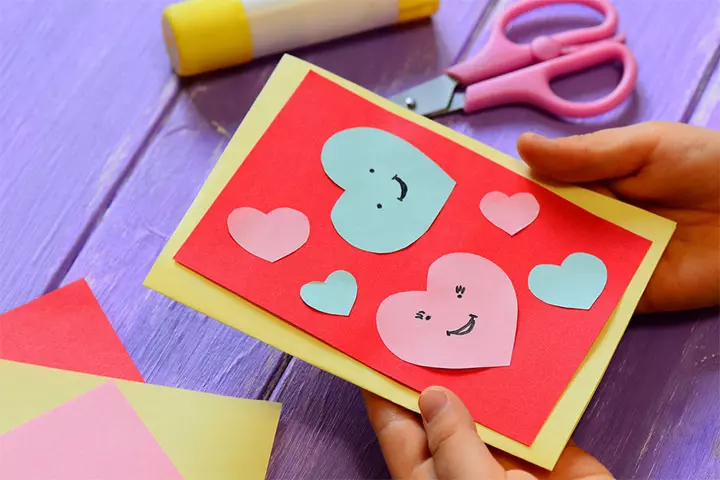
- Get colored construction paper, markers, crayons, glitters, glue, and stickers if you like.
- Tell your child clearly who the card is for, but do not enforce your ideas on how to make it. Of course, you can help them out with the words.
This activity could thrill your second grader and keep them focused for hours. Their creativity grows as they try to attribute illustrations and greetings for a said occasion.
15. Popsicle stick photo frames
This is a great family time activity. It is exciting, and there’s no one way to do it!
- You will need a piece of cardboard that fits your photo, some popsicle sticks, glue, and a photo.
- Glue the popsicle sticks together for the outline of a frame.
- Cut out the cardboard and paste it behind the stick frame.
- You can then decorate your frame with colors and glitter and finally, paste the photo inside.
This activity increases your child’s creative thinking and lets them try something different each time to decorate the picture frames.
16. Rock art
Rock art is yet another tactile activity that your child might enjoy. The clattering sounds and the pebbles’ smoothness could be fascinating, while painting over the irregular shapes of the rocks can improve their hand and eye coordination.
- Head out with your seven-year-old and pick up some rocks or pebbles varying in sizes, shapes, and colors.
- When you get home, grab your paints and brushes, and let your child get colorfully creative.
- Encourage your child to draw faces of people or animals on the rocks as well. Emojis could be a fun option too.
- You can keep the rock art safe in a box or glue on some magnets and make them fridge magnets.
Indoor Activities
These indoor activities, from creative crafts to interactive games, can help boost your children’s imagination, problem-solving skills, and energy while keeping boredom at bay.
17. Build a terrarium
A terrarium is a full self-sustaining ecosystem. Oxygen from the air around replenishes the little green plant life, while light comes in through the glassware. Keeping the soil moist provides the required water, and the falling leaves decompose the soil.

Here is how you make it.
- Pick up a sufficiently big glass bottle or bowl and start spreading damp soil along its bottom.
- Then, plant small shrubs that don’t grow too fast or too tall.
- Add some gravel over the soil and get creative to make the terrarium your child’s wonderland.
- You can try this activity with 7-year-old girls or boys and make it your little hobby to bond over.
18. Charades
Charades is a spectacular cooperative game that tests the boundaries of communication without having to say a word. It is a fantastic option for when your children are bored and are just looking for a fun game to play.
- Choose a category that your children are well aware of. You can pick animal behavior, action words, rhymes, Disney movies, superheroes, or cartoon characters.
- Write down specific words that pertain to each category, jumble them up, and have each child enact the word.
- If the other children can guess the word being acted out, the actor gets a tasty snack treat.
This way, you are tickling those little tastebuds while the children learn to communicate nonverbally.
19. Pass the ball
A classic game of passing the ball is an exceptional indoor rainy-day activity that never gets old with kids.
- All you need is a softball, or a cushion, and some good groovy music.
- Make the children sit in a circle and have them pass the ball as the music plays. The one who holds the ball when the music stops steps out.
This game allows your child to determine when to toss over or hold onto the ball to stay in the game.
20. Spot it!
This excellent little indoor game is much like a scavenger hunt and is a great exercise for the mind and the eyes. It is played in many Indian homes in the vernacular.
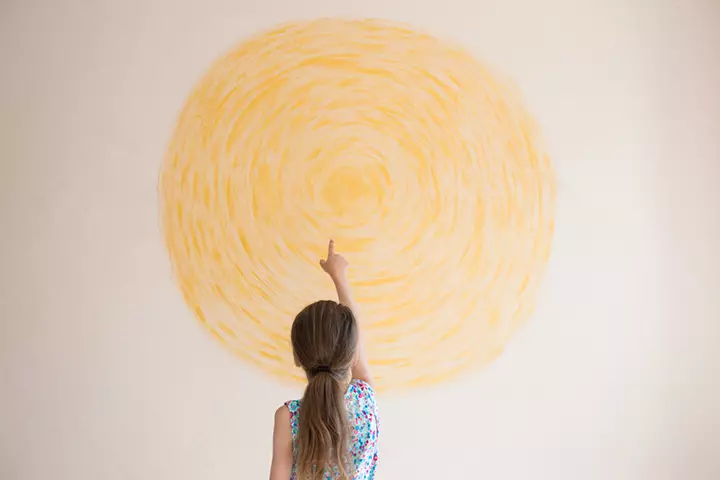
- All you need to do is mark a boundary, say within the room you are currently in, and call out to your kids, asking them to spot a particular object in the room.
- You could say, ’spot a yellow flower’ or ’spot a monkey doll.’
- You could help your kids by instructing them if or not they are close to the object.
This game enhances the child’s presence of mind and makes them more aware of the surroundings they live in. They observe things around the house that they may not have and know what goes where in your home while improving their matching skills.
21. Chinese whispers
Here’s a hilarious activity for when you have quite many kids around. It’s the best when played at birthday parties but can also be played for some family fun.
- Get everyone to stand in a line.
- Whisper a lengthy, maybe confusing, statement to the first child in the line, who then whispers the same sentence to the one standing behind. There should be no repetition of the message.
- Finally, the last person says the statement aloud, which is most often completely different from what you had said to begin with.
This strategy game enhances children’s attention skills and allows them to learn that even simple words can be misinterpreted. It teaches that clear communication includes more listening than speaking.
22. Simon says…
This popular game teaches the child to listen to instructions and follow them, despite distractions.
- You get to be Simon and give an actionable statement that your child has to perform. Use the phrase, ’Simon says,’ before some of the statements and leave it out in a few.
- Your child needs to listen well and do only the tasks that were said by Simon.
- Mix up the tasks so that they get to do a variety of actions.
This game teaches your seven-year-old the importance of listening and being attentive while improving their decision-making capabilities. They also get to do a variety of activities that nurture their fine motor skills.
23. Build a blanket fort
This is an evergreen indoor activity for kids of seven who like making forts using different items like dominoes. You can get creative and build a cozy rainy-day blanket fort or just a springtime reading nook.

- Just pull out some light blankets or screens and start pinning or tying them onto nearby knobs, doorknobs, or hinges.
- Once your fort’s ceiling is done, plop the hanging ends of the sheets under heavy books or furniture to keep the fort intact.
- Put some soft and cozy sheets, quilts, and cushions inside.
- You can get creative and add lights or build your fort according to a theme you have in mind.
- Cloud castles are something that 7-year-old girls may enjoy, while a soldier’s fort is something that 7-year-old boys will love.
 Quick tip
Quick tip24. Bake!
Baking gives children a sense of amazement and joy as they create something delicious from scratch. Baking is also a subtle but effective tactile play. So, get your little master chef’s hats and aprons out, and get baking!

- Pick a simple recipe to begin with: some cupcakes or some chocolate chip cookies.
- Have your second grader help you out with mixing, whisking, churning, and decorating.
- Bake them and enjoy the treats!
Outdoor Activities
25. Catch the ball
Yet another old classic game!
- Have all kids stand in a circle for this fun, fast-paced game.
- From the center, throw a ball high up in the air.
- When the ball is at its peak, call out a child’s name, and they have to rush in to catch the ball.

This game teaches children to respond immediately at a moment’s notice.
26. Nature scavenger hunt
Nature scavenger hunt is a fun and engaging activity for 7-year-olds, which gets them close to nature and can be played in groups or individually.
- Make a list of objects that your children can find around the area within a said time (feathers, flowers, pebbles, dried leaves, etc.).
- Hand them the list of objects and a paper bag to put the collection into. The first one or team to find all the items on the list wins.
- You can also make up little clues instead of the words themselves. For instance, leaves could be ’something green on trees.’ By doing so, your kids will learn to translate the hints into actions and work accordingly.
This incredible game also improves your child’s visual intelligence, critical thinking, and decision-making skills.
27. Lemon and spoon race
Get your seven-year-old child’s competitive spirits high with the good old lemon and spoon racing game. This is also an excellent method to allow children to experiment with balance and steadiness.
- Just get a few lemons from the refrigerator and a spoon for each participant.
- The aim is for each participant to cross the finish line while holding the spoon, with the lemon in it, in their mouth, and walk a certain distance without dropping the lemon.
28. Water balloon attack
What says outdoor fun better than a water balloon attack?
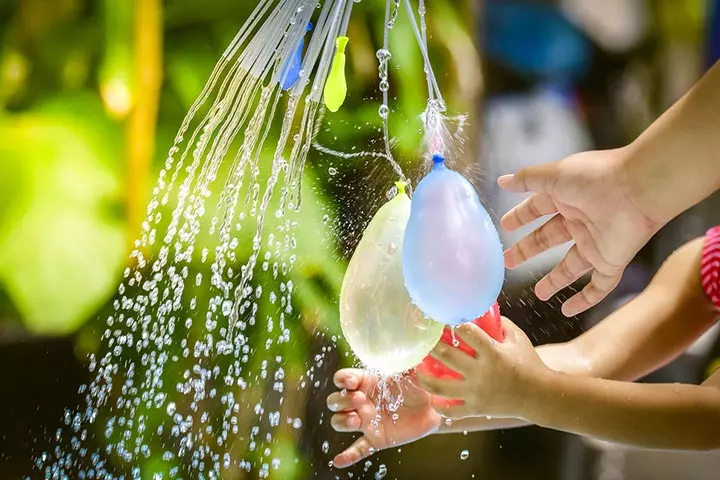
- Form small groups and give each team an equal number of balloons.
- Let them fill up their balloons with water and throw them at each other. The team that has more dry players wins!
- If you are worried about throwing balloons right at kids, turn it into a water balloon baseball or bowling match.
This fun-filled game gives your children a sense of team spirit while working together and trying to protect their teammates.
29. Chalk obstacle course
Any child is sure to go crazy with a chalk obstacle course. This learning game for 7-year-old children is a great way to tweak their strategic thinking and cognitive flexibilityiAbility of one’s brain to switch and adjust its thinking capabilities in response to a changing environment. .
- All you need is chalk and a spacious driveway. You can even do it along a section of the sidewalk just outside your house.
- Get innovative and create an obstacle course for your kids. Drawdown patterns like zig zags, loops, spirals, lines to jump over, shapes to hop into, balance beams to maneuver through in a catwalk, hopscotch squares, etc. You can incorporate a chalk maze of a rainbow to go over too.
- In addition to developing quick motor skills, this obstacle course idea for kids can also help get your children to read. Write down little hints like ’hop,’ ’slide,’ or ’stop,’ all through the course.
30. Kitchen utensil bubble wand
Attention bubble lovers! This is your go-to activity. Just make your bubble solution, and you are ready to go. Here is how.

- Mix equal quantities of cornstarch and dish soap with water.
- Pick up some kitchen utensils that have holes in them, and you have your bubble wand.
- Dip the utensils in the bubble solution and blow away.
This activity screams fun! While your child discovers a magical bubble kingdom, they will also learn how much pressure is used to blow big or small bubbles and work with the wind. This game gives them a great sense of direction.
31. Supermarket search
Kids love it when they are involved in grown-up tasks! So, have them help you out when you head out to the supermarket the next time.

- Make it a lively 7-year-old activity by giving them a list of the items you want to buy.
- The one who brings all or most of the items to you first gets a little toy or a delicious treat.
Children learn how to spot the items while working their way quickly and easily through the aisles. They also develop social skills while seeking help and gain the confidence to find their way out of unknown or complicated situations.
32. Find the little hidden toy
An exciting strategy game for a 7-year old, much like the infamous Hide and Seek.
- Pick up one of your child’s little toys and head out to your backyard.
- Have your seven-year-old close their eyes and count to 20 while you hide the little toy on a low branch or among the leaves. (Sometimes you can just toss it on the ground.) Let your child go in search of the toy.
This is yet another game that enriches your child’s all-round awareness and prudence. They will decode from the places that you had hidden the toy previously while scanning and searching for it. It could quickly become your child’s new favorite outdoor game.
33. Doctor and Goliath dodgeball
A fun little twist to the traditional dodgeball that is suitable for kids and even adults.
- Divide the players into two teams equally.
- Let the teams pick a ‘doctor’ and a ‘Goliath.’ The selected players must be kept a secret.
- The doctor has the ability to heal any team members who have been knocked out of the game. The players who are hit can raise their hands up for a healing high-five from the doctor.
- To speed up the game, add a ‘Goliath.’ If the Goliath is hit, all the team members are out.
This game can teach kids the importance of second chances. They can share how they felt when they were out of the game and when they were ‘healed.’ It can also help them understand the importance of friendship and inclusivity. Goliath dodgeball can be influential in helping them understand the phrase, ‘A team is only as strong as its weakest player.’
Kathryn Williams, a therapeutic recreation specialist, shares how she plays Doctor and Goliath Dodgeball with kids. She explains, “I have run this game with children as young as seven and adults as old as 24. I have played with as few as six kids to 30 adults (I would recommend splitting it into two different games of dodgeball if you have this many people).” She continues, “The more I have played this, I have realized that the doctor version can go on forever. To help speed the game up, you can add a “goliath” on each team.”
She provides a tip for keeping the balls steady; she says, “For the half-court line, I use frisbees because the participants can clearly see the line and the frisbees hold the balls in place so they are not rolling around (i).”
How To Keep A 7-Year-Old Occupied And Active
Keeping a 7-year-old engaged requires a mix of fun, learning, and movement. The right activities can stimulate their creativity, enhance their skills, and keep them physically active. Here are some practical ways to keep them occupied.
- Encourage creative play: Creative play, such as storytelling, puppet shows, or dress-up games, allows kids to use their imagination and express themselves. It also helps develop their problem-solving skills, encourages social interaction, and boosts their confidence while keeping them entertained for hours (3).
- Engage in arts and crafts activities: Provide materials for drawing, painting, or DIY projects. Art activities help develop fine motor skills and hand-eye coordination, spark creativity, and boost their self-esteem (4). Plus, they allow kids to explore different textures, colors, and patterns.
- Get them involved in simple chores: Assign fun household tasks like sorting laundry, watering plants, or organizing toys. Research shows that children who do chores develop higher self-esteem, responsibility, and patience, helping them handle challenges and succeed in school (5).
- Encourage reading and storytelling: Provide age-appropriate books or create a storytime routine. Reading enhances vocabulary, cognition, comprehension, and imagination while instilling a love of learning (6). Storytelling sessions also boost creativity and communication skills (7).
- Organize indoor and outdoor physical activities: Experts suggest that children aged between 6 and 17 years should have 60 minutes of physical activity every day (8). Regular physical activity boosts attention, memory, and muscle strength while reducing the risk of depression and chronic diseases like type 2 diabetes. It also improves heart health, blood sugar levels, and bone strength (9).
Frequently Asked Questions
1. How do educational games affect the brain?
Educational games like chess and monopoly are essential for stimulating the brain processes and structures responsible for cognitive abilities and functions. Thus, they aid in the development of children’s cognitive growth (10).
2. What are the benefits of activity games?
Besides aiding neurocognitive development, activity-based games, such as freeze tag and musical chairs, help children navigate through the trouble of social skills, coordination, and cooperation and help them stay healthy and fit (11).
3. How can parents and educators create a balanced mix of educational activities for 7-year-olds?
Parents and educators can create a balanced mix of educational activities by understanding the child’s unique interests, weaknesses, and challenges. After that, design activities based on different approaches, such as hands-on experiments, storytelling, audio-visual aids, and group discussions. To promote critical thinking enjoyably, incorporate experiments, role-playing, and puzzle games. A blend of structured activities like guided lessons and unstructured educational activities like peer-to-peer knowledge sharing and finding information through online resources will benefit children and retain their interest in learning.
4. What are the advantages of educational activities for 7-year-olds compared to other forms of entertainment?
Educational activities for 7-year-olds help enhance problem-solving, critical thinking skills, and decision-making in children. These games make learning enjoyable and help kids develop essential life skills. As children assess problems and work out solutions as they play, it can boost their confidence. Children can also develop physical strength with games like catching the ball and lemon and spoon races. At the same time, they also learn the importance of teamwork and cooperation.
5. Are there any recommended educational apps or online resources for 7-year-olds?
There are many educational apps and resources for 7-year-olds online. You can find apps for learning languages and subjects, quiz-taking apps, and understanding general concepts. Some apps also help students build critical thinking skills by teaching them coding concepts. Many of these apps are free. You can explore any of them according to your child’s interests, needs, and abilities. Find one that helps them boost their knowledge and gain specific skills.
7-year-olds are usually bursting with energy and eager to try new things. Thus, you may soon run out of ideas to keep them engaged. So, whether you’re looking for indoor activities for a rainy day or educational activities that will help them learn, we’ve got you covered. This list of games for 7-year-olds can help you introduce your child to new activities that may boost their stamina and cognitive skills while keeping them engaged. Take a break from your daily routine and engage in these interesting activities for kids with your children to strengthen your bond and create lasting memories.
Infographic: Educational Activities And Games For Seven-Year-Olds
Engaging children to learn a new subject can be taxing; however, it could be made easy with exciting games and activities. If you are looking for ways to interest your seven-year-old in educational learning, we present activities that make this task fun for you and your child.
Some thing wrong with infographic shortcode. please verify shortcode syntax
Illustration: Best Educational Activities And Games For 7-Year-Olds

Image: Dall·E/MomJunction Design Team
Board Games allow children to develop their imagination and problem-solving skills. Enjoyable to play with friends or families, here are some board games suitable for your seven-year-old.
Personal Experience: Source
MomJunction articles include first-hand experiences to provide you with better insights through real-life narratives. Here are the sources of personal accounts referenced in this article.
i. Doctor and Goliath Dodgeball.https://theracreate.blogspot.com/2013/05/doctor-goliath-dodgeball.html
References
- Learning through play: a review of the evidence
https://cms.learningthroughplay.com/media/wmtlmbe0/learning-through-play_web.pdf - The art of creating: Why art is important for early childhood development.
https://www.canr.msu.edu/news/the_art_of_creating_why_art_is_important_for_early_childhood_development - The Role of Creative Play in Childhood Development.
https://playmatters.org.au/blog/the-role-of-creative-play-in-childhood-development - The Importance of Arts and Crafts for Early Childhood Development.
https://www.cmosc.org/benefits-of-art-during-early-childhood/ - Benefits of Chores.
https://centerforparentingeducation.org/library-of-articles/responsibility-and-chores/part-i-benefits-of-chores/ - The Importance of Reading to Your Children.
https://www.allforkids.org/news/blog/the-importance-of-reading-to-your-children/ - Storytelling- benefits and tips.
https://www.teachingenglish.org.uk/professional-development/teachers/managing-resources/articles/storytelling-benefits-and-tips - Motivating Kids to be Active.
https://kidshealth.org/en/parents/active-kids.html - Health Benefits of Physical Activity for Children.
https://www.cdc.gov/physical-activity-basics/health-benefits/children.html - Educational games for brain health: revealing their unexplored potential through a neurocognitive approach.
https://www.frontiersin.org/journals/psychology/articles/10.3389/fpsyg.2015.01056/full - Learning through play.
https://www.unicef.org/sites/default/files/2018-12/UNICEF-Lego-Foundation-Learning-through-Play.pdf - Hopscotch; The Genius of Play.
https://thegeniusofplay.org/genius/play-ideas-tips/play-ideas/hopscotch.aspx#.Y4aVIHZBxPb
Community Experiences
Join the conversation and become a part of our nurturing community! Share your stories, experiences, and insights to connect with fellow parents.
Read full bio of Dr. Pooja Parikh
Read full bio of Harshita Makvana
Read full bio of Deepa Thomas
Read full bio of Nisha Bharatan








